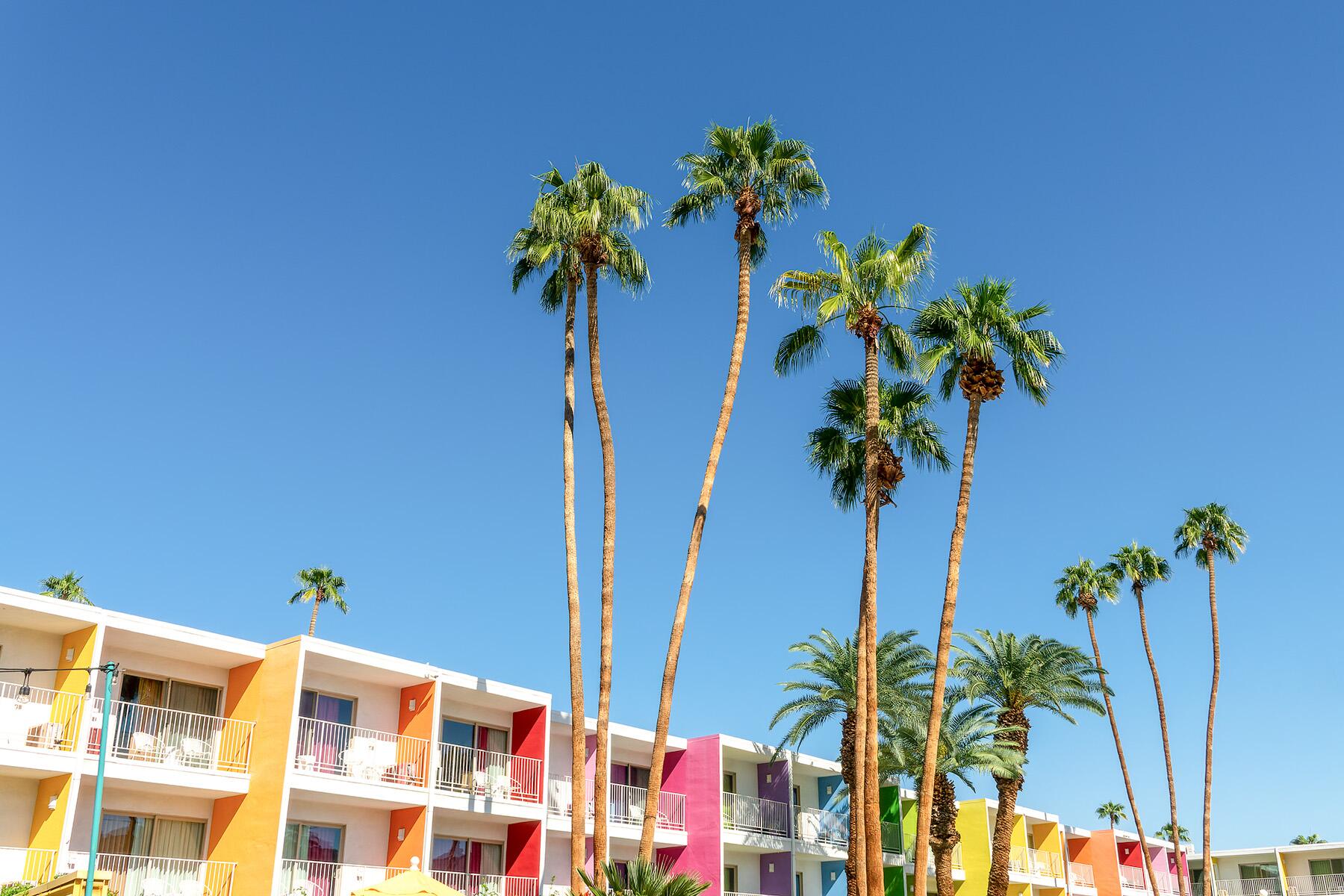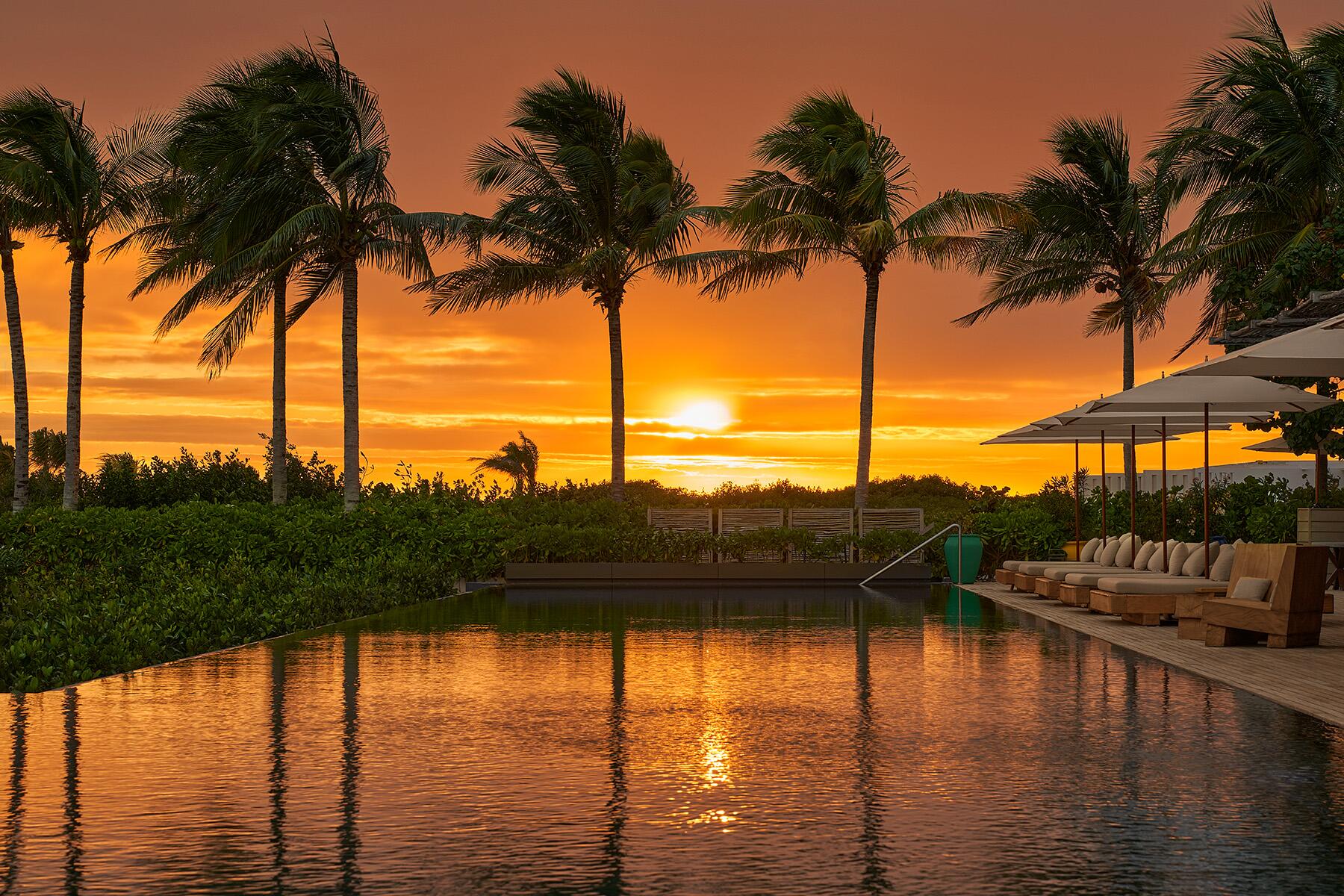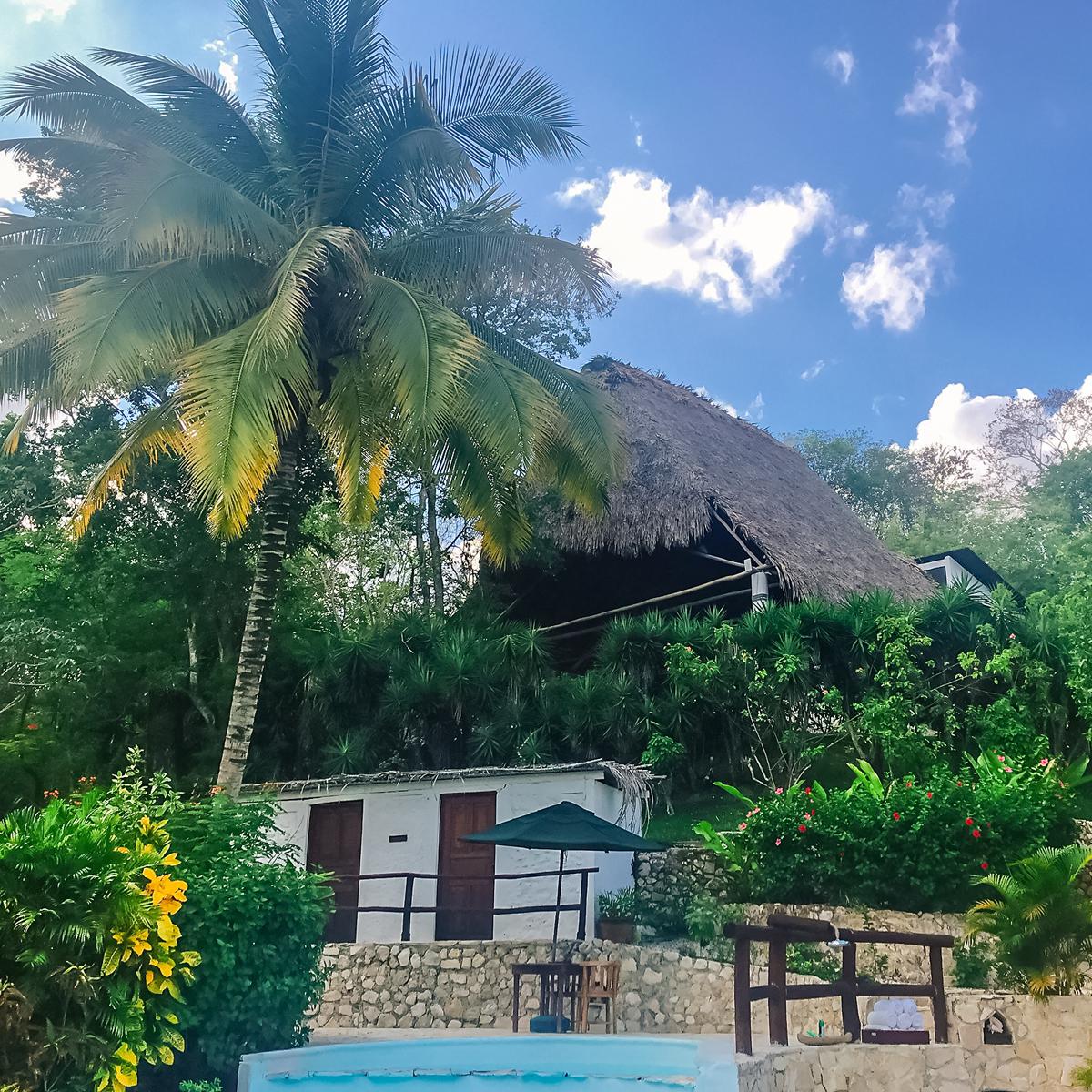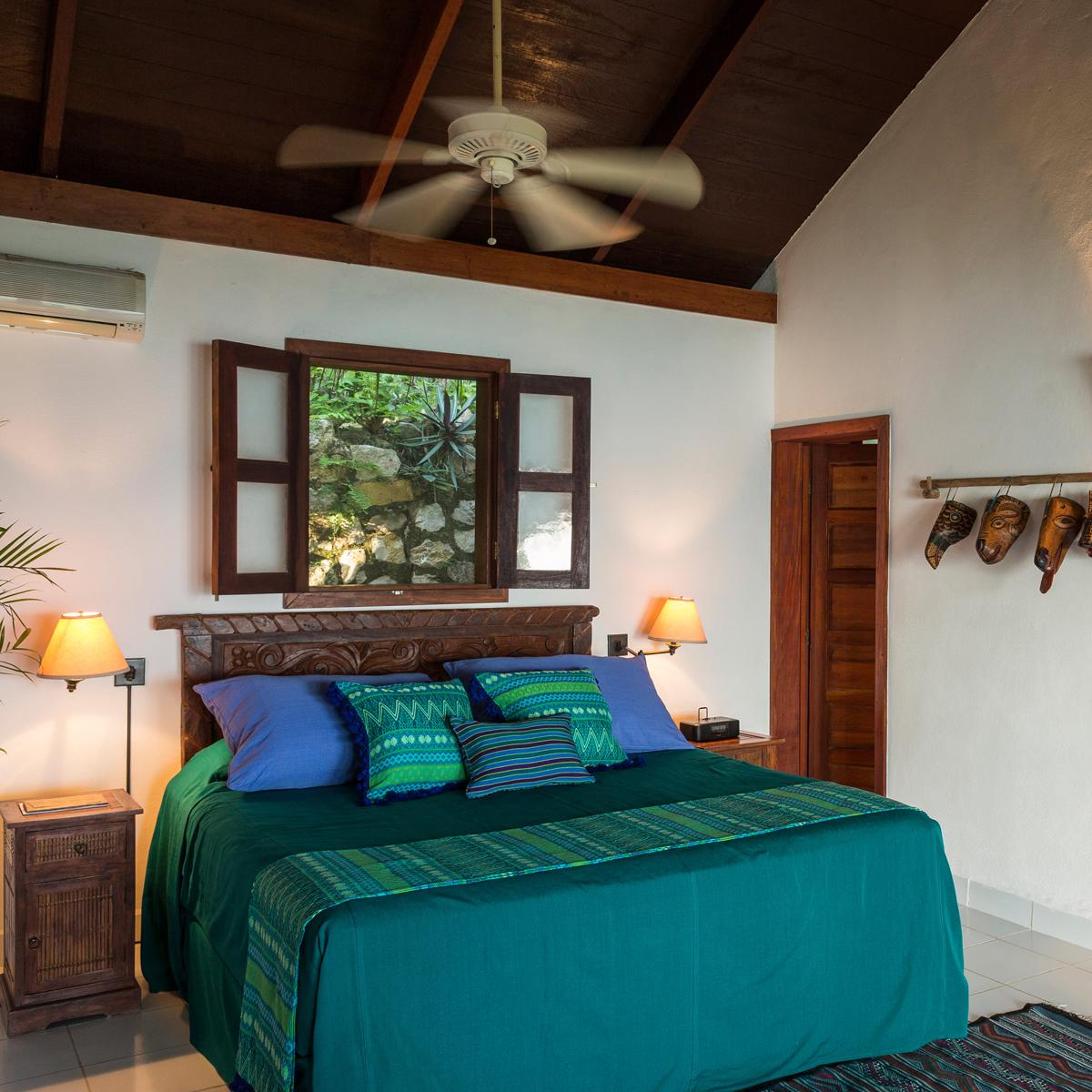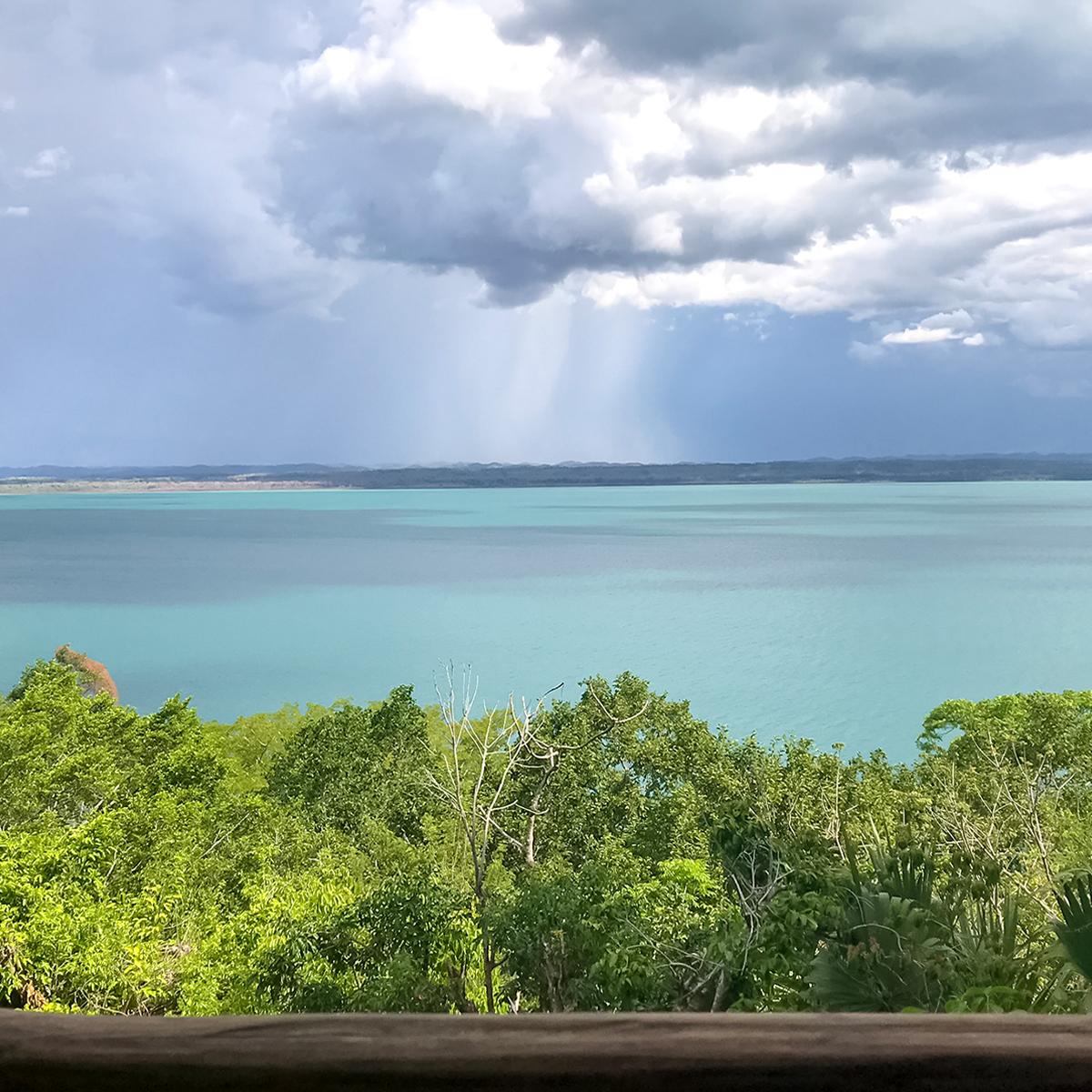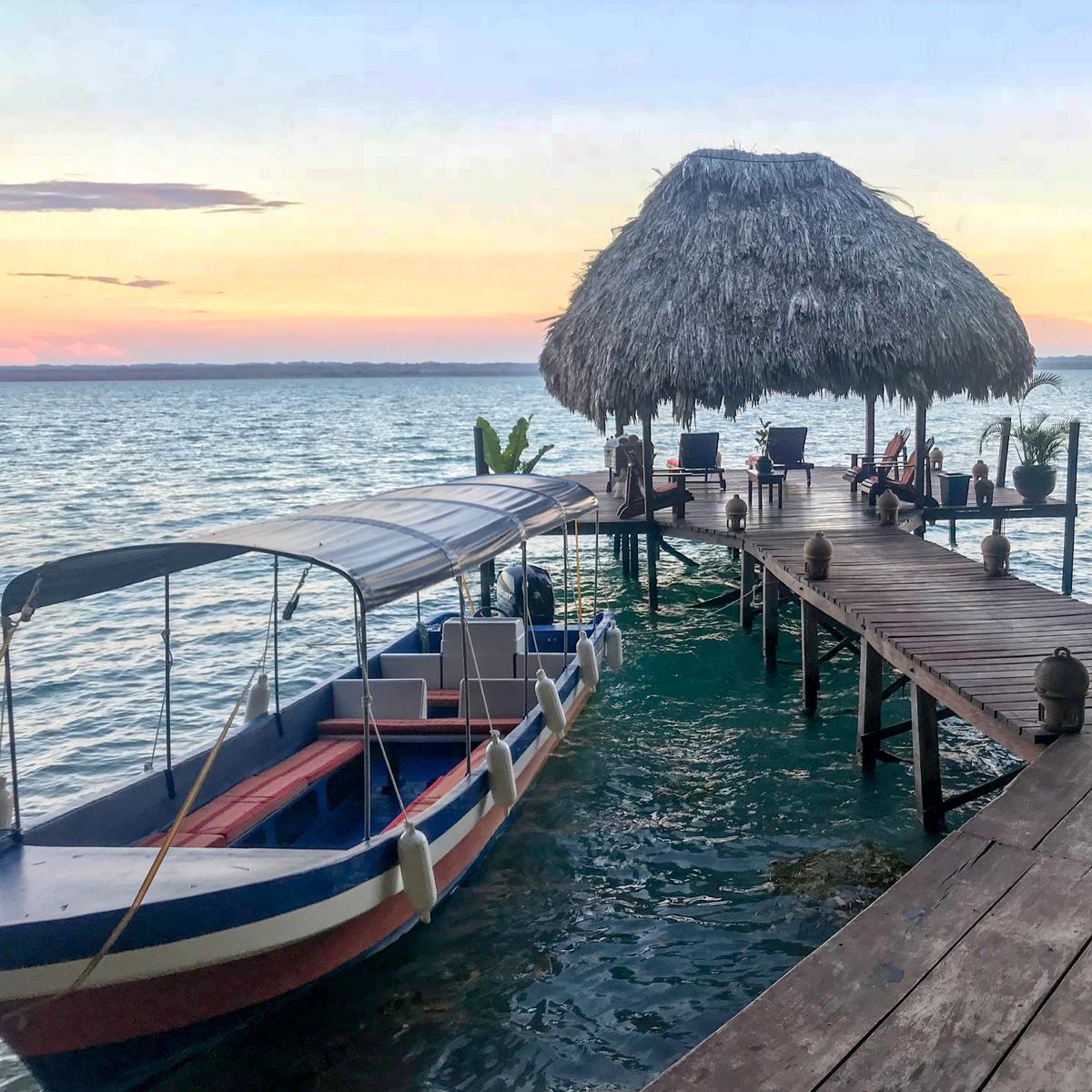Sometimes, before paradise can be found, you’ve first got to go on a journey to fight your fear.
This journey started for me in the Guatemala City airport. I was heading to a small hotel in the middle of a lush jungle in the northeast of Guatemala, not far from the Belizean border: La Lancha. Even the name, which simply means “the Boat,” sounded paradisiacal, forbidden, secret, as though it should be said in whispers, like Shangri-La or Valhalla. La Lancha. But, I was afraid.
A lot of people are afraid of this country, Guatemala. Especially now. It has been vilified by so many so recently. A country cruelly marketed as a land where caravans of invading violent deviants originate. Hell, to some it wasn’t even a country, just “a part of Mexico.” It’s the kind place that, when telling certain others I was going, provoked the response, “You’re going where?” It was challenged so frequently, it almost startled me. But that’s not why I was afraid. No, my fears were based in actual reality: I was afraid of a 40-year-old plane.
The Perilous Journey
To get to La Lancha, this secret kingdom, requires journeying another 300 miles either by road—10 hours in a chicken bus, a tricked-out school bus—or by flight—a mere 50 minutes. I didn’t want to wait another 10 hours for heaven, so I went skyward. But, embarrassingly (I’m a travel editor, dontcha know), I’m afraid of flying. I thought I’d been cured—I subjected myself to a form of exposure therapy last year by flying the longest route known to humankind—but that was business class aboard a Singapore Airlines Airbus 350ULR, and this was a TAG Airways (what the hell is this airline anyway?) Embraer EMB 110 Bandeirante, which, according to Wikipedia, hadn’t been manufactured since 1990. And this one looked even older than that.
Recommended Fodor’s Video
My stomach turned, my eyes shed tears, my brain chastised my foolishness in seeking out a paradise accessible only by prop jet.
“Welp,” I figured, “I’m gonna die.”
For five hours on a Saturday morning, I sat in the Guatemala City Airport food court waiting for my exit. At the terminal, I finally saw my toy transport—oh, dear, it was even smaller than I imagined. There were 11 other passengers in line. I could see the Fox chyron now: 12 Dead in “Mexican” Plane Crash, Cowardly Snowflake Travel Editor Among Them. Nope, I wasn’t cured. So, naturally, as a red-blooded American faced with a problem of the body, I popped a Xanax. And I boarded. There were no assignments necessary for these old, leather, military-style bench seats. I buckled up. Tightly. I listened to music. Billie Eilish shoegazed, “I don’t need a Xanny to feel better.” What does a 17-year-old know about mortality? And then we were in the air. My stomach turned, my eyes shed tears, my brain chastised my foolishness in seeking out a paradise accessible only by prop jet. But 20 minutes in, that 40-year-old plane leveled off and out that window, beyond the propeller, I saw a wild field of lush majesty. Now, calmness wrapped its arms ’round me and I ascended into giddy joy. Either I’d been seduced by beauty or that Xanax hit me hard.
Another 35 minutes and my feet were back on solid ground. I’d done it. Not too bad. An SUV picked me up and I embarked on the hour drive from the Flores Airport to La Lancha. It was smooth sailing until we made a left turn toward Lake Petén Itzá, the second largest lake in the country—then came seven miles of largely unpaved road and a bumpy 20-minute ride. Along the way, we passed a hotel called Gringo Perdido, the Lost Gringo. Not gonna lie, that was strangely ominous. I suddenly felt as though I were Jonathan Harker charioted through dangerous mountain passes en route to Castle Dracula or Capt. Willard crawling through forbidden jungles while hunting Col. Kurtz. But such thoughts were only natural. After all, the proprietor of La Lancha was none other than Francis Ford Coppola, who directed both Bram Stoker’s Dracula and Apocalypse Now, as well as the Godfather films.
To be honest, Coppola was a big part of the reason why I hopped the scary plane to paradise in the first place. No, not to interview him, though lord knows I asked, because, to put it mildly, I’ve always been a fanboy. While others were watching 90210, I was playing The Conversation on VHS over and over again. And now, lights, camera, action, I was here, at Coppola’s hotel.
Paradise Now
Fade in on a gate slowly creaking open. The SUV veered left through the gate and we meandered past a security guard and across a gravel drive. Finally, I’d arrived and immediately I realized I’d been delivered to heaven. Oh, certainly, it sounds contrived but quite honestly, it felt as though that plane had gone down in a remote wilderness and I’d risen from the chains of this earth, dead and walking right through the pearly gates.
This, I thought while sitting in the chair, is where Coppola rests. This, I thought while lying in the bed, is where Coppola sleeps. This, I thought while bathing, is where Coppola showers.
A peaked thatch roof rested like a straw hat atop the jungle. Birds and cicadas hummed. In the distance, the lake sat sublimely still, sparkling under the sun—its shade of blue unlike the navy of the sea or the azure of the sky—rather, if you were to hold it against a Home Depot color swatch, it would most closely resemble what’s called Maya blue—and this can’t have been by coincidence. These were the ancient grounds of the Mayan, after all.
Escorted down stone stairs and past an inviting swimming pool, I was ushered to my room. A mahogany deck wrapped around a two-room thatch-roofed villa. Wood-carved masks hung on the walls and wood-carved religious statues stood idly upon the furniture—all made in the highlands of the country by local artisans and all selected by Mrs. Coppola and their daughter, Sofia, the similarly famous director of Lost in Translation and Marie Antoinette. Beyond the balcony, the lake called and in the trees, the spider monkeys danced. It was just too gorgeous.
“This room,” the bellboy told me, “is Mr. Coppola’s when he’s here.” The staff spoke of him reverentially. He, that quixotic auteur, the Man of La Lancha, seemed regarded as some ethereal figure, some otherworldly proprietor.
But, I understood—I revered him, too. And when told this was his room, my heart exploded. This, I thought while sitting in the chair, is where Coppola rests. This, I thought while lying in the bed, is where Coppola sleeps. This, I thought while bathing, is where Coppola showers. Calm down you psycho groupie, I chastised myself.
When Coppola opened this property over a decade ago, he’d already opened two others in Belize, Turtle Inn and Blancaneaux Lodge. In the forward of a coffee-table book placed on my room’s coffee table (naturally), a passage about what are collectively known as the Family Coppola Hideaways stated that Mr. Coppola had been searching for an Eden as peaceful as the one he’d spent so many months in while filming Apocalypse Now in the Philippines. This he discovered in Belize. And, soon, too, he crossed the border and also discovered it here, in Guatemala.
I’d taken so much Xanax that I collapsed on Mr. Coppola’s bed in the early afternoon. The last thing I remembered was staring up at the ceiling fan. It sounded like a helicopter. Maybe Ride of the Valkyries would blast any minute.
Machu Picchu Ain’t Got Nothing on This
Cut to my alarm going off at 5:30 in the morning. I wasn’t purely here to live out fanboy fantasies but to see one of the greatest archaeological ruins on this planet—Tikal. And to see it before the heat made it impossible, I rose early. At six, my guide, Jesus Antonio, picked me up and escorted me to the nearby site. Jesus Antonio was born and raised in these parts and still lived in a village close to the resort. He was middle-aged with a big mustache, a friendly smile, and a contagious love of this land.
The drive took little more than an hour and the walk along the forest paths another 15 minutes—but, holy jungle wonders, what a stroll. On top of being an all-around lovely guy, Jesus Antonio was a veritable machine of knowledge—a walking, talking Alexa, knower of all. At rapid fire, he rattled off the list of flora within our gaze, the Latin names, of course, and their various medicinal or spiritual properties.
Before me existed an Indiana Jones fantasy come to life—a meandering complex of temples and pyramids, grand in scale and utterly magical to anyone who has ever fancied themselves a gentleman adventurer.
Pimenta dioica: “This is the tree where allspice comes from.”
Ceiba pentandra: “This is one of the holiest trees for the Mayans, who believe that when they die, their spirit enters the tree and from there they ascend to the stars where they join their ancestors.”
Jesus Antonio told me later that his specialty is forestry, which routinely whisked him throughout the world to distant archaeological sites and conferences to assist in digs and lectures.
“Listen,” he said, “in the trees. The howler monkeys!” And, as the howlers howled, he howled back, mimicking them perfectly. “And there—look—the spider monkeys! Watch out! They’ll poop on you.” And then he delivered a perfect mimicry of the spider monkeys. When he was a child, he and his friends used to imitate the monkeys—whichever boy got a genuine reply back from a primate got to be team captain and choose the sides in soccer matches.
“And there,” he said excitedly as he grabbed my shoulder. “I can’t believe it! I haven’t seen one in years!” It was a small, slow-moving anteater clinging tightly to a branch. “A tamandua!” As we carried on down the path, he told just about everyone we encountered, “There’s a tamandua just over there! A tamandua!”
And then, behold! Not another tamandua, but the ruins. Pure UNESCO-anointed wonder.

Apologies to Mr. Coppola, but suddenly I went full Spielberg. Before me existed an Indiana Jones fantasy come to life—a meandering complex of temples and pyramids, grand in scale and utterly magical to anyone who has ever fancied themselves a gentleman adventurer, whip in hand, hat cocked roguishly. The Mayans tossed this all together more than 1,200 years ago, conjuring up a metropolis of wonders born from dirt and bush. But in the centuries since the mysterious erosion of this civilization, the jungles have reclaimed these wonders, temple by temple, pyramid by pyramid.
Now, seldom few ruins have been uncovered, reclaimed from time and earth. Many remain gobbled up by the ground. While wandering the cutaway paths, suddenly there will emerge a strange, unnaturally-shaped hill—it’s a pyramid that has yet to be revealed, a temple yet to be reborn.
“We don’t have the money,” Jesus Antonio said. “It’s better to leave them buried than to uncover them and not have the resources to protect them. They’re safer this way.”
While there are those, like Temples I and II, that have been lovingly released from the grip of nature, and those that have been temporarily abandoned to it, there are some that are only partially uncovered, like Temple VI, which rises not only from the forest but from the clutches of the jungle tentacles which hug it close, as though strangling it. It’s a unique architectural mixture, made both by God and man: a biomechanical ruin.
It was all so, so glorious. And, because tourists seem to avoid these parts (I don’t know why, maybe it’s fear), it was like being at Chichen Itza or Machu Picchu, but without the crowds. Which is all the more remarkable because, to put it plainly, it was the finest ancient ruins I’ve gazed upon in the Americas. Not. Scary. At. All.
Oh, Beautiful, Beautiful Guatemala
I interrupt Indiana Jones and the Ruins That Tourists Fear to Tread for another admission. Though ostensibly I journeyed here as some sort pilgrimage to someone I admired—much like some may go to the Vatican or Graceland—and to see the glories of Tikal. But, there was another reason, which I’ve already not so subtly alluded to many times in this article: I really wanted to see this country, especially since it’d been getting such a bad rap by the lapdog press of a hysterical president (at this point in the article, several readers may feel the need to scour this website, looking for an email address so that you may write to us to say, “Keep politics out of travel. Unsubscribe!” But, please save your time, send your complaints directly to me: [email protected]).
Yes, Guatemala is impoverished, that’s undeniable. Ten percent of the GDP is comprised of remittances, the money sent home from abroad, mainly from the U.S.; by comparison, agriculture accounts for 13 percent, tourism for eight. But the money that’s sent home from the grueling unwanted jobs in the United States means the difference between a house made of plywood and corrugated metal and a modest one built from cinderblock. These two varieties of housing are on display throughout the country in small villages, many erected along the highways, mountain passes, and main thoroughfares as though they were suburban tracts.
I spoke with someone who lived in a village along the lake (I won’t say her name) who told me of her love of her own country—in fact, she never wanted to leave. She swore to herself when she was a child that she would never be an immigrant crossing the border. But, circumstances changed. Precipitated by the death of her father and the hardship of her family, she hired a coyote and began the arduous journey. Somewhere along the way, in the middle of the desert, she collapsed. The coyote told her if she didn’t continue on, he’d cut her leg wide open. She gathered her strength and made it to the United States, where she lived for several years—she spoke of the U.S. with love and longing. In the end, she made the difficult decision to return home. Still, she’s proud of her country—of its beauty and spirit. As much as she misses America, she’s happy to have returned.
There’s nothing villainous about wanting for better than little, nor is there anything monstrous about doing anything it damn well takes to seek just that.
There’s a lot of pride here, seemingly built on its resilience. The 36-year-long civil war only ended 23 years ago, in 1996. It was a brutal time—an estimated 200,000 were murdered, many of them Mayan, though several I spoke to speculate the number was even higher, closer to 400,000. In 1999, a declassified U.S. report highlighted America’s participation—the CIA trained and backed the Guatemalan army, well into the 1980s, the deadliest period of the war, full-well knowing of the massacres on indigenous villages.
Jesus Antonio, the La Lancha guide, remembered what things were like in the perilous war years.
“[War] was everywhere,” he told me. “You couldn’t escape it. One side or the other would come to your house and tell you that you were fighting for them now. If you refused, they’d take you outside and shoot you.” That’s all he’d say on the matter. He quickly changed the subject.
The recovery from those times has been long and often marred by local corruption—only a few oligarchic families sit at the helm, while the vast majority of the people work hard for only a little. For them, though they sure do love their own country, they believe that one of the few ways to actually get ahead in a system rigged against them is to go north. Though the sentiment has been written by many far wiser than I, it still ought to be said again: there’s nothing villainous about wanting for better than little, nor is there anything monstrous about doing anything it damn well takes to seek just that. There’s nothing scary about that—it’s human, plain and simple. Again, send your complaints to: [email protected].
But back to our feature presentation.
Farewell to Shangri-La
Wrapped in the jungle comforts of La Lancha, any ugliness of circumstance or history felt so far away. I was lucky and I knew it, cocooned in a sanctuary, where the only hardship was deciding whether to sip wine (Coppola’s, of course) on the lanai or poolside; and the only hardships I faced were the knowledge that in a couple more days I’d be leaving, and that I only got to reside in Coppola’s quarters and not meet the man himself.
There’s always a certain amount of guilt that comes with traveling to struggling economies. It’s one of the ethical questions that disquiet many travelers. And there’s an even stronger feeling of guilt when resting in luxury among poverty. There’s no correct or simple answer, and I’m hardly going to pretend to have one. But, know this: tourism is not only welcomed but necessary to this economy, especially with the double whammy of the U.S.’s withdrawal of financial aid earlier this year (they have since announced restoring some of the aid) and with the aforementioned anxiety that affects how so many potential tourists view this country. I urge you, though, to consider spending your money here—stay in Guatemala, eat in Guatemala, tip well, and enjoy with abandon.
I decided to spend my remaining hours and money devolving into a lazy, sedentary, slothfully loafing oaf. Yes, there were other adventures I could have hopped aboard—perhaps to the nearby floating city of Flores, a centuries-old Spanish settlement stolen from the Mayans. But, wait, I wanted more Chardonnay! I dedicated myself to nothing but pool, lake, and wine. The heat barreled down, almost cripplingly so. It became impossible for all but the most active—and that ain’t me—not to devolve—and that is me.
In the evenings, when the brutal heat gave way to pleasant air, I hopped aboard the funicular, which crawled through the property’s hillside like a pious pilgrim to an altar, and following the path of the sun, descended to the lake. I could spend my days here, I thought, all of them on this property, in this country. Yes, I could be here all the way into death or madness, whichever comes first, eating myself to fatness, drinking to bloat, shaving my head and going full Marlon Brando. It would take Mr. Coppola himself to evict me from his room, his bed, his shower.
But I had to leave. Not that I wanted to, but there were other parts of this country to explore, more magic to witness: the quaint villages nestled within the crevices of the volcanoes that circle Lake Atitlan in the highlands (not scary), the 17th-century colonial town of Antigua that’s dotted with brightly-colored restaurants and lined with cobbled roads (not scary), the capital itself—Guatemala City—a metropolis with one of the most magnificent museums on the ancient Maya (not scary). So, back to the (definitely is scary, but who cares?) plane. And, for those who are still reading, who haven’t left here to write me furiously, and who once had any fear or anxiety about traveling to this country, I implore you: pop a Xanax if you have to, turn up Billie Eilish (or your music of choice), fight your fear, and gaze upon gloriously gorgeous Guatemala. For those who aren’t afraid and never were: what the hell are you waiting for? There’s a proud paradise waiting for you out there.
